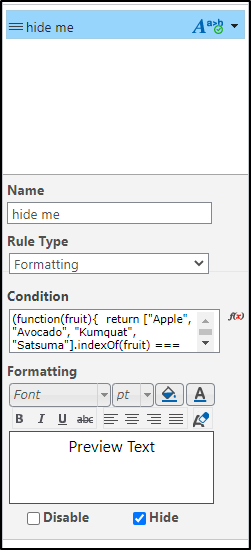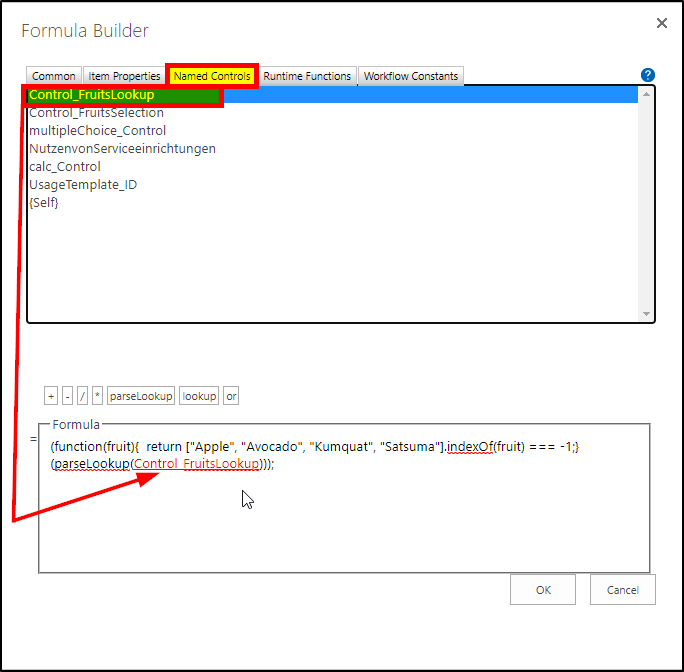I have the following code in place to hide a panel unless Brewing, Bottling or Racking is selected in a list lookup field for department.
not(or(equals(Department,"1;#Brewing"),equals(Department,"3;#Bottling"),equals(Department,"4;#Racking")))
I'm trying to add a new department called Canning, but when I do the hidden panel will not show when Canning is selected. If I put Canning first in the list it works and then Racking will not work.
not(or(equals(Department,"1;#Brewing"),equals(Department,"3;#Bottling"),equals(Department,"4;#Racking"),equals(Department,"6;Canning")))
Is there a limit to the number of or(equals statements I can have here?










